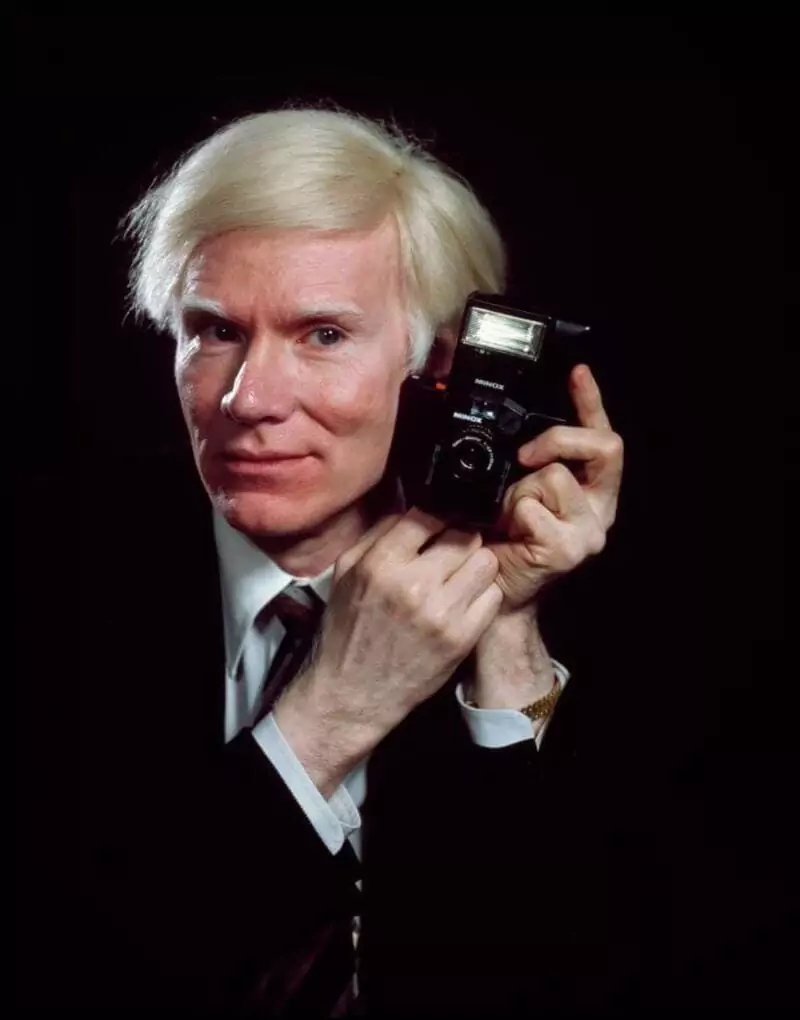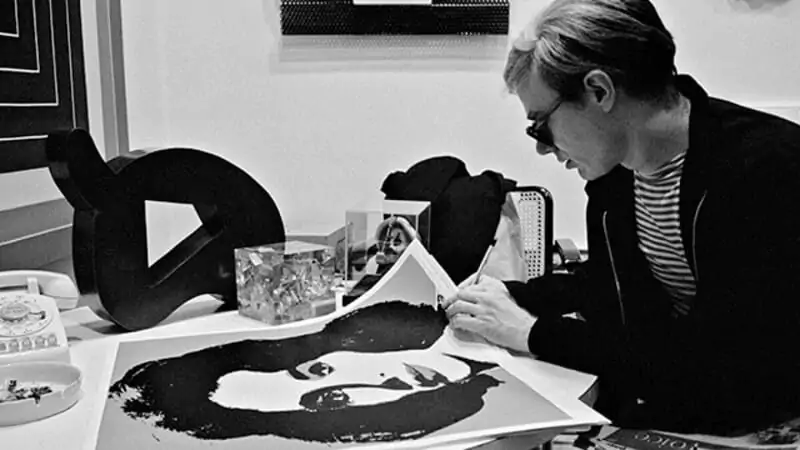Andy Warhol
IQ 120
Andy Warhol was an American artist, producer, and director. Throughout the 20th century, he transformed art in the United States of America. Even though the public was already familiar with artistic mediums like painting, Andy introduced a fresh idea known as "Pop Art." The public expressed great appreciation for his illustrations. He was, however, also criticized by many for making art more marketable. A select few of his well-known pieces were produced for well-known companies like Campbell Soup and Coca-Cola. Warhol did not limit himself to painting; he also dabbled in film. He directed 60 films, the majority of which were regarded as eccentric and unconventional.
Was Andy Warhol a genius? Get to know more about Andy Warhol IQ and his life through the article below.
I - What is Andy Warhol IQ?
According to estimates, Andy Warhol IQ falls between 112 and 120 IQ Score, which is above average and places him in the top 14% of people worldwide.
Many books, feature films, documentaries, and retrospective exhibitions have all been dedicated to Warhol. The largest museum in the country devoted to a single artist is the Andy Warhol Museum in his hometown of Pittsburgh, which houses a sizable permanent collection of artwork and archives. Many of his works are highly valuable and collectible.

II - Andy Warhol IQ and his life
On August 6, 1928, Andy Warhol was born to Julia and Ondrej Warhola in Pittsburgh, Pennsylvania, in the United States. He was the couple's fourth child to be born. Pavol and John Warhola, Andy's two older brothers, were artists. Andy suffered from several illnesses as a child, including Sydenham's chorea and scarlet fever. Andy began to feel fear toward hospitals and doctors because he was frequently diagnosed with illnesses. Andy was a loner and had fewer friends than most kids his age. His absence from class because of his poor health was the cause.

Andy spent the majority of his childhood in bed. Andy used to be frequently amused at home by his parents and brothers. He believes his personality was shaped by this difficult time in his early years, not Andy Warhol's IQ.
1. Andy Warhol Education Background
Andy Warhol had his educational career in a working-class neighborhood in Pittsburgh. He attended the free art classes at the Carnegie Institute after school at Holmes Elementary School roomed with His father who died when he was 14 years old, suffering from a jaundiced liver since 1942. Once more, therefore, “I went through that shattering feeling for the first time,” Stelter said, recalling how his 14-year-old self hid under his bed during the wake since he was “too sick to attend my father’s funeral.” And so, while another tragic event was unfolding: his father’s death, Warhol was hiding out during the wake, where he spent a good portion of the ceremony literally under his bed. His college education was financed with money left as a lifelong savings account in which Mr.Andrei Varhola’s father recognized his son’s artistic talents. Consequently, he provided in his will that all of his life savings should be used to pay for the college education of his son. And so Andy Warhola entered the Carnegie Institute of Technology in pictorial design in 1945, the same year he went into Schenley High School and graduated from there in 1945.
After all, if we take into account that one possesses a brilliant brain (measured by others to be at 130) and the encouragement of his or her father, perhaps only then can a career in academics be pursued despite a relatively weak state of health. Later he was known to succeed in art and became a role model for the youth.

Andy Warhol and his process.
2. Andy Warhol IQ and his successful Career
Today, even as an artist, one can feel the presence of Warhol. He established a couple of institutions for art preservation in his lifetime. His artistic creations have appeared in shows throughout America. Today, plenty of youngsters in America and around the world derive great encouragement not just from his productions but also his acute perceptions as demonstrated in Andy Warhol’s IQ. “The Andy Warhol Museum” in Pittsburgh is a major proof regarding how much Americans love and esteem this great artist.
The post-war advertising industry was looking for a late 1940s, more experimental sensibility; however, this was not always the case. In the end, Warhol landed many commercial works with his whimsical style. Not much time had passed before he was doing shoe illustrations for Harper’s Bazaar and Glamor and creating window displays for New York’s top department stores.
The 1950s were far more prosperous for Warhol; each year his income from advertising work increased, peaking at $53,000 in 1959-roughly halfway to half a million today. In 1960, he bought a four-story home at Lexington Avenue and 89th Street that cost $60,000. Even though his artwork was only a fraction of his success, he sold more work in the mid-1950s than the rest of his career combined; the brunt of that commercial success grossed rather small compared to what Warhol was actually capable of producing. Throughout all these years, the hope of breaking into the American avant-garde, being recognized as a serious artist continued for Warhol. However, by the end of the decade, prevailing artistic taste was merging with pop culture rather than focusing on Warhol’s subject matter.
He is well-known for his films, in addition to his work on numerous print advertisements for different products. His experimental film "Chelsea Girls" from 1966 is his most well-known piece of celluloid art. His first commercial success came from the film. The film "Chelsea Girls" is renowned for its outlandish "split-screen" visuals, which set a trend. The "U. S Postal Service" released an 18-inch stamp in 2002 to honor Andy Warhol's accomplishments. A few years after his passing, Pittsburgh's "The Andy Warhol Museum" was established in his memory. The staggering $12 million was spent to preserve the artist's works.
Andy Warhol's IQ and his innate artistic talent have been skillfully applied to bring him a series of lifelong successes and great fortune. More than that, what Andy is most successful about is that his artistic talent is stored and lived forever.
III - Lessons from Andy Warhol for Business
Visitors to the Whitney Museum of American Art can view "Andy Warhol - From A to B and Back Again" through March 2019. The exhibition is named after Warhol's 1975 book of the same name, which discussed his perspectives on various subjects, including economics, love, and art. In addition to establishing Warhol as a creative genius with an IQ of 120, this book also demonstrated that he had a thorough understanding of the principles underlying commercial advertising, pop culture, business, and success.
1. The most effective leaders have a consistent capacity for unconventional thinking
Some of the pieces’ meaning may leave you pondering at the outset, or simply asking ‘why?’. One way or the other, however, something will stick with you. What separates Warhol from all those great renowned masters who had been content to ply their trades in traditional styles and outlets is the cutting edge: silk-screen printing, the 1984 Amiga computers for digital artwork, and his use of “cutting-edge” techniques. Where at first some of Warhol’s work might be considered imitative of the expressionism movement, he worked his way into a career in the pop art movement where he developed a mode of operation and style all his own.
2. Simply "showing up" has a lot to recommend it
Without failure, success is impossible. Success isn't just about contributing great ideas; it's also about consistently stepping up, brainstorming, and picking yourself back up even when an idea doesn't work out as you had hoped.
3. Past success is never a justification for complacency
Warhol had always had his sights set on better and bigger things despite coming from a low-income family and continued to create new works until his untimely death in 1987.
4. It's important to establish one's personal brand
Warhol recognized the importance of creating a brand to hold audiences' attention over time. He was able to do this in several ways, including by choosing the precise artistic outlets and media that would set him apart from other well-known artists, mastering and owning those media, and making sure each piece of work he produced included a personal touch.
5. A real business person can take something simple into a marketable good
"Art is about creating something people don't need." Pop culture symbols and well-known branding were often repeated in Warhol's creations. His most famous series: 32 paintings of various Campbell's soup cans. It deals with creating something which people want or start even to need rather than something they ”need.”
WHAT IS YOUR IQ?
This IQ Test will help you test your IQ accurately
IQ Comparison with other Celebrities:
Andy Warhol
IQ 120
vs
IQ comparison with Andy Warhol
Maybe you are interested
